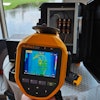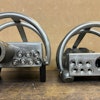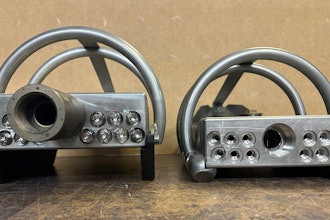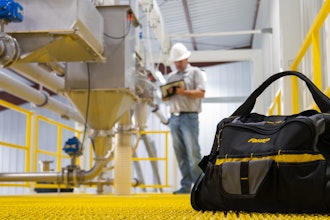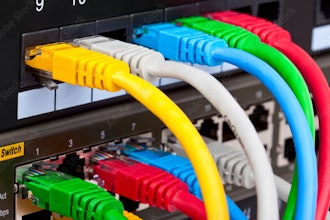Pumps have historically been the backbone of numerous processes in industrial and municipal applications, but have often been overlooked in the commercial building market. Whether embedded in HVAC equipment such as chillers or cooling towers, or viewed as inherent to the plumbing architecture, they play an integral part in numerous building functions.
While pumps continue to perform the tasks for which they were designed – movement of liquids/solids, there are several trends impacting the future of pumps and pump systems. Historically, pumps have been supplied as part of larger systems and were frequently misapplied, improperly sized, and generally left to be stand alone components in larger systems. Many trends in the building market have increased the visibility of pumping, and ultimately the “pump system” as a key component. Key trends include:
- Energy Efficiency
- System Efficiency
- Building Management Systems
In the commercial building market, the key driver is energy. Electrical energy demand is projected to double by 2030, putting the world in the midst of a global energy dilemma. At the same time, there is a need to cut CO2 emissions in half to prevent dramatic environmental impact. While many factors contribute to this problem, commercial buildings, as one of the biggest energy consumers, present a tremendous opportunity for efficiency improvements.
Buildings account for an estimated 35 to 40 percent of the total energy consumed in the U.S. Within the realm of energy, there are numerous sources of consumption; and at the same time elements of safety, security, and reliability - which all need to be managed in a holistic way.
Pumps are implicated in various building sectors as noted below (HVAC, Refrigeration, other), which when combined, make up more than 60 percent of a building’s energy consumption.
In the commercial building market, there are two primary drivers behind improved energy management:
- The U.S. Green Building Council’s (USGBC®) Leadership in Energy and Environmental Design (LEED®) Green Building Rating SystemTM, which affords tax incentives to end users
- Green Building Specifications, which are now the “typical spec” in the North American market
While the term HVAC is generically used to describe the systems in a building that provide cooling, heating and ventilation, two primary applications are pumps and fans.
Pump Efficiency
As you can see from the typical pump life-cycle cost profile, over the lifetime of pumps, energy costs account for 40 percent of the total costs—everything comes together around energy consumption. Some of the potential for energy savings revolves around the following factors:
- Pump Sizing: pumps are often oversized for the application and/or sized to meet the peak demand required.
- Operating Cycle: rarely are pump demands constantly consistent, there are variations by time of day and time of year.
- Pump Wear: over time, BEPs can be maintained to optimize energy consumption.
Let’s take a look at how “Intelligent Pump Systems” can help manage energy consumption. Let’s start with the definition of an Intelligent Pump System. The ARC Advisory Group defines an Intelligent Pump as the combination of a pump and a VFD with digital control capability. The VFD itself is a primary energy savings device due simply to the impact of the affinity laws. The power consumption decreases by the cube of the speed. So a 10 percent reduction in motor speed, while having a nominal effect on flow, reduces energy consumption of the pump by more than 25 percent.
Pump Systems Efficiency
With multi-pump systems, the decision to stage or de-stage is commonly done based on system demand. In a pressure-based system, if there is a drop in pressure, the drives ramp up motor speed. Under conditions of constant demand, a multi-stage system may have multiple pumps running at non-optimal speed. Yet due to inherent fluctuations in demand, altering the number of pumps running may result in the final stage being cycled on and off. As such, consideration of multi-variable approach towards the staging or de-staging decision is essential in getting the optimal, energy efficient control scheme. For a typical pressure-based system, this may involve monitoring torque, flow and time. As such, the system requires some logic function which can be based in the VFD, a PLC, an HMI or separate logic control functions.
When referring to additional feedback devices, it is not necessary that this would bring about an increase in cost. With the usage of VFDs, there are ways to approximate the system variables, such as flow, using data the VFD readily tracks, such as torque and current. This allows for smart decision making in control logic, as described above, and also paves the path for additional pump system functionality. For instance, with the approximation of flow values and current and torque data available, software functionality can be utilized to detect leaks and perform appropriate mitigation in the system control logic.
Building Management Systems
The monitoring and control of data from a central and/or remote location provides building owners the opportunity to both reduce energy and increase system uptime. Tracking energy consumption creates a benchmark of an optimal system, provides data for system control scheme decision-making, and paves the way for early detection of looming problems, such as a motor-bearing deterioration or motor-winding damage. Additional hardware to conduct the energy monitoring function is no longer a requirement, as power consumption data is now available within smart starters and variable frequency drives. The ability to collect this data and take averages over time allows for tracking of a motors performance and subsequent scheduling of preventative maintenance.
Tracking of such data is increasingly accomplished via building specific communication protocols such as BACnet. The ability to embed such capability in VFDs and PLCs both dramatically reduces product solution costs, as well as offers the potential to reduce panel space, wiring costs, and material costs!
In addition to building connectivity, the capability to remotely track alarm conditions may also present added value to the owners and maintenance personnel, specifically when the implication of an alarm is time critical. Many PLCs have the capability to connect to GSM modems, which allow for an alarm to be sent out in the form of a text message to maintenance personnel. This allows for quicker response.
With the emphasis on implementing VFDs for energy efficiency purposes, along with the known benefits of decentralization in multi-zone building HVAC systems, there is an inherent need to implement a local system controller with sufficient programmability and functionality. The functionality referred to would ideally include multi-variable based pump optimization algorithms. This reduced the complexity involved at the building controller system level whilst retaining sufficient control over setpoints and high level system variables such as the building temperature and power consumption. In doing this, a decentralized controller also needs to have a means to accept external command references as well as support common building controls protocols.
Summary
With the increasing focus on energy and the benefits afforded to building owners and managers, the need to monitor not simply macro level systems, but delve down to specific energy consuming devices allows for reduced operating costs, increased property values and overall more attractive building sites. Pumps are an integral part of several applications within the building, and the increasing focus on and ability to manage their systems, provide a significant opportunity to enhance building performance, distinguish property values, increase occupancy rates and ultimately increase property value!

